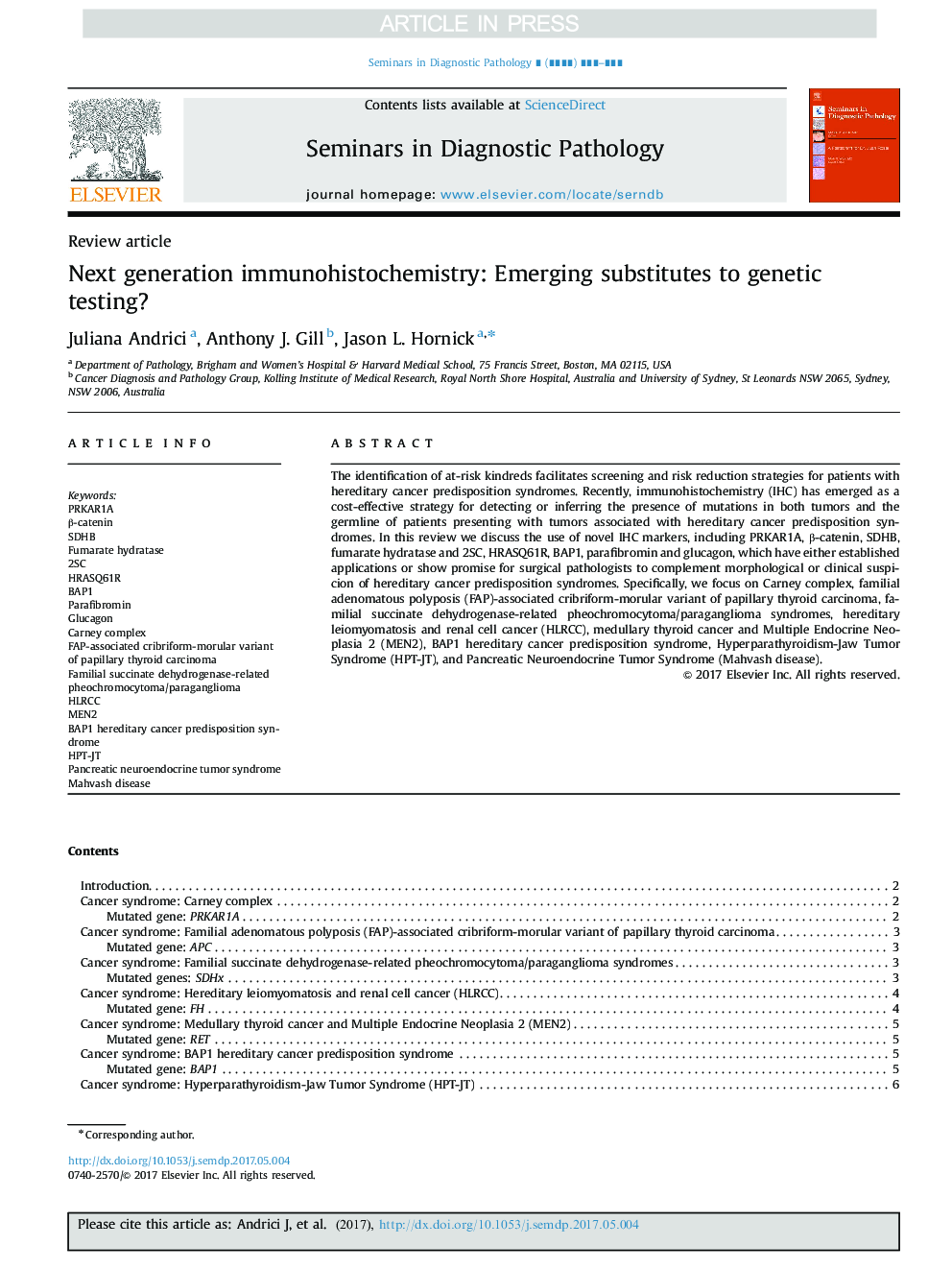| Article ID | Journal | Published Year | Pages | File Type |
|---|---|---|---|---|
| 8808027 | Seminars in Diagnostic Pathology | 2018 | 9 Pages |
Abstract
The identification of at-risk kindreds facilitates screening and risk reduction strategies for patients with hereditary cancer predisposition syndromes. Recently, immunohistochemistry (IHC) has emerged as a cost-effective strategy for detecting or inferring the presence of mutations in both tumors and the germline of patients presenting with tumors associated with hereditary cancer predisposition syndromes. In this review we discuss the use of novel IHC markers, including PRKAR1A, β-catenin, SDHB, fumarate hydratase and 2SC, HRASQ61R, BAP1, parafibromin and glucagon, which have either established applications or show promise for surgical pathologists to complement morphological or clinical suspicion of hereditary cancer predisposition syndromes. Specifically, we focus on Carney complex, familial adenomatous polyposis (FAP)-associated cribriform-morular variant of papillary thyroid carcinoma, familial succinate dehydrogenase-related pheochromocytoma/paraganglioma syndromes, hereditary leiomyomatosis and renal cell cancer (HLRCC), medullary thyroid cancer and Multiple Endocrine Neoplasia 2 (MEN2), BAP1 hereditary cancer predisposition syndrome, Hyperparathyroidism-Jaw Tumor Syndrome (HPT-JT), and Pancreatic Neuroendocrine Tumor Syndrome (Mahvash disease).
Related Topics
Health Sciences
Medicine and Dentistry
Pathology and Medical Technology
Authors
Juliana Andrici, Anthony J. Gill, Jason L. Hornick,
